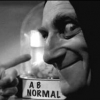-
Posts
5,217 -
Joined
-
Last visited
-
Days Won
328
Everything posted by Abby Normal
-
-
Firefox has a setting to clear the cache when you close it. Chrome buries it in advanced settings an you have to manually clear browsing data. I run CCleaner to clear all system temp and cache files, and unwanted cookies. You do want to keep a lot of cookies for sites you frequent. If you install CCleaner go to Options, Advanced and uncheck 'Only delete file in Windows Temp folder older than 24 hours'. Then set it run when you start your computer.
-
Yeah, I did one this morning where the fed tax was 350 less but the state tax was 650 more. This mostly happens when they switch from itemizing to standard, because the state standard deduction is low. MD raised it a little bit, but decided to keep about 2/3 of the windfall the new tax law was creating.
-
The fun corner of my desk.
- 21 replies
-
- 11
-

-

-
"passed away". Good one! I'm gonna use that. I have a jar on my desk labeled "Ashes of Problem Clients".
-
We should have a swearing forum where we can just cut loose, with a warning before you answer.... or just do what Rita and I do and swear in private messages.
-
Awhile ago I made a rule in my office that no one could ask me a question about any matter that was less than $100... because NOBODY GIVES A A FLYING.... UM..... TRUCK! YEAH, THAT'S IT, TRUCK.
-
True. We all have those self-destructive clients.
-
You need to emphasize your value and explain that this is why they should always call you when doing anything financial that involves more the $1,000. Some would argue that this is loan basis because the shareholder is personally liable, but I agree with you that it is not.
-
I bet all these payments went to the taxpayer and were deposited into her new LLC bank account. If the name of the LLC is close to the old S corp name, the banks would have no problem depositing them.
-
Oh, so if she didn't get the money, it's possible it's lost in space somewhere. Either that or she got all the money.
-
I'd say only half or so of my clients are doing significantly better with the new law. 25% are about the same and 25% are paying more. The ones with large 2% deductions and high SALT deductions with no kids are getting hurt the worst. I've also been adjusting the withholdings down substantially because we know that will happen with the new tables.
-
How do you talk to an S corp? You talk to the shareholder or an officer of the corporation.
-
Contact the issuer of the 1099s and ask for copies of the cancelled checks or other proof of where the money went.
-
I only break a K1 into two or three when they have amounts in more than one of boxes 1, 2 and 3. And this is because ATX warns me those different types of income have to be calculated separately. The amounts on other lines are always too small to make a difference. As for box 20, the only ones that matter are A and B. Code V is only important when the K1 is owned in an IRA. If it's over a certain amount, it can cause tax or penalty or something.
-
I keep task manager open and occasionally check how much ATX is consuming. Yesterday it was up to 1,850 MB (1.8 GB) of RAM and was still running fine. Looks like that large address aware utility is working.
-
- 1
-

-
Whenever these things happen, the first questions I ask are: who got the checks? Where and when did they deposit them? And how in the world did they negotiate a check made out to a corporation? Did your shareholder client receive any cash from this late windfall? If not, she should be making inquiries or filing complaints.
-
I was going to change my voicemail message to say, "We are working as hard as we can to finish as many returns as we can by the deadline, and we will call you when your return is ready. If you leave a message asking how your return is coming, we will do your return last and you will definitely be on extension."
-
Nah. I like the bad boy that Rita's mama warned her about.
-
https://www.forbes.com/sites/anthonynitti/2015/04/05/ten-days-until-tax-day-how-to-tell-inconsiderate-clients-youll-be-extending-their-returns/#3e7153702aea Dear _________, I heard you stopped by the office today at noon. Sorry I didn’t get to see you; lately I’ve been spending my lunch hour in the parking lot, sitting in my car and quietly weeping. Judging by the disorganized pile of unopened envelopes and food-stained receipts on my desk that alerted me to your visit, it looks like you dropped off your tax information. How sweet of you! But here’s the thing. It’s April ____th APRIL _____th!! The tax deadline is in less than ten days. And you know this. You’ve always known this. Because unlike Thanksgiving, Easter, and Arbor Day, tax day is always on the same exact day of the year: April 15th. Well, except when it falls on a weekend, in which case it might be the 16th or 17th, but you get the idea. Yet, despite presumably possessing the ability to comprehend the standard Gregorian calendar, here you are, dropping off all of your information mere days before the deadline -- just as you did last year, and the year before that -- and leaving me a Post-It note thanking me for “squeezing you in.” Only I won’t be squeezing you in. It’s nothing personal, it’s ju….OK, maybe it is a little personal. I have to know -- why are you dropping your stuff off now? I could understand if you were waiting for a K-1 or some other information from a third party that just arrived in the mail, but that’s not the case. You’re a W-2-mortgage interest-charitable contribution kinda’ guy, and you’ve always been that way. Yet, simple as that sounds, you can never manage to get your information to me before the calendar turns to April. And that’s freakin’ rude. Squeeze you in? When, exactly, would you like me to squeeze you in? Last week I worked ___ hours, and I still have ______ returns to get out the door before April 15th. And every single one of those _____ returns is in the queue ahead of you, because those people had the good sense -- nay, the decency -- to bring me their information BEFORE THIS WEEK. So by asking me to squeeze you in, you’re basically saying, “Hey, I know the next ten days of your life are going to be pure hell, but do me a favor…when you mercifully reach the end of the months-long pile of returns you’ve had to complete, just knock mine out real quick.” It's as if I was asked to run a marathon, only to have you show up with 100 meters left and move the finish line back another mile. And for that, I hope you c0ntract a raging case of pinworms. Come to think of it, actually, it would be a refreshing change if you conceded that you were at the end of my list. Because if memory serves me, every year you drop off your information on the 5th or 6th, and then start calling on the 7th to find out “how things are coming.” Well, this year, let me tell you in advance “how things are coming.” Since tax season started, I’ve put on _______ pounds. I haven’t seen my kids during daylight hours since _______. My neighbor just told me that the Fed Ex guy's/Avon lady’s car is often parked outside my house for hours at a time, but whenever I get home, I’ve got no packages/cosmetics but one helluva happy wife/husband. THAT’S how things are coming. So no, I won’t be “squeezing you in” before April 15th, because that’s a physical impossibility. The only time during the day when I’m not sleeping or preparing a tax return is on my drive to and from work, and careening off the road while trying to prepare your return at 70 mph is not how I intend to die. Although to be honest, right about now the idea of eternal rest sounds pretty damn appetizing. In short, I’ll be filing an extension for your return. See you in May/hell. Sincerely,
- 4 replies
-
- 11
-

-

-
I hope Tom and Rita got a point for vulgarity in this thread. I'd hate to think I'm the only one with marks on my permanent record.
-
I would consider the option that this work from home person is an independent contractor.
-
When I see those K1s I tell my clients that each K1 is $50 per year and $100 when any units are sold. Partial redemptions are the worst because they're easy to miss if you're in a hurry.
-
ATX was aware and it is reported to be fixed.
-
Really? I thought it was so much simpler and easier this year.





